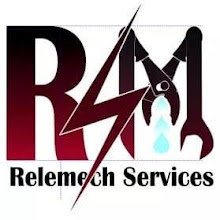Security is always a concern or a factor while coming up with a structure or a home. Who doesn't worry about their property or most importantly their loved ones? There are many ways by which you can keep away insecure elements from your loved ones including installation of an electric fence.
This is a wired fence that is electrified to give a warning shock to an object, animals or a person that comes in contact with the fence. The advantage of using ‘electric’ or ‘high tensile’ fences is on average they cost less than a barb wire fence, since less materials are required (ie posts, staples and wire) and they take less time to install. The electric fence option is also more versatile; you can take it down quickly and re-install somewhere else. An Electric fence is not dangerous The voltage being sent through the wires is high, but the current or amplification (amps) is very low.
Firstly by releasing the flow of electrons from the capacitor in regular pulses of high voltage but very low amperage. The amperage component of the electrical charge is greatly reduced to figures in the range of 10 - 500 milliAmps. Secondly the electrical energy pulses through the wires. This means once every second for 1/300th of a second it sends a pulse of electricity down the line. This gives whatever touches it a chance to remove or get away without a prolonged exposure to Electric shock.
What are the components of an Electric Fence?
1. Fence energiser;
The energiser is the heart of your Electric fence system and for that matter should be purchased form a reliable and recognised supplier. Care should also be taken to ensure it is properly designed and sized. Contact a qualified personnel for sizing and installation of the same. It converts power (from the mains, battery or light (solar)) to pulses and push them down the electric fence line. The pulses are of high voltage and low amperage, which makes them, like static electricity, safe but an unpleasant experience when touched. The difference between Energisers is in their pushing power and energy, i.e. how far can they push the pulse and at the same time maintain their voltage. The following should be considered before purchasing a fence energiser:
- Power choices – mains, battery or battery/solar.
- How much power output you need.
- The distance of the fencing.
- The type of fencing are you putting up
2.Ground rods
This is also a very critical component in Electric fencing and very much essential to its functioning.If an insecurity element and the ground terminal of the charger are not sufficiently grounded, the path of electric current cannot be completed and the element will not feel the shock. This means your fence will not be functional. Since earth provides half of the electric field circuit, it is crucial to have a properly installed ground circuit. You will need a minimum of 3, 6-8 foot long, rods placed at least 2 meters away from the energizer and 3 meters a part from each other. The rods and clamps are connected back to the energizer using galvanized wire.We will share with you more on proper installation of Ground rods in our upcoming articles
3. Wire
They come in different sizes and strength depending on ones needs. Electrified high-tensile wire fencing is the most common and widely used fence wire.High-tensile wire is available in two options: galvanized steel and aluminum. Both are strong, hard-wearing, and low maintenance. Choose the electric wire that best meets your requirements to ensure that you have the most effective conductor for your application to save yourself unnecessary expense later and thtas the best advice with regards to choice of fence wire. In our upcoming articles we will share with you other types of fence wire available for your choosing
4. Insulators
An important component of your electric fence, insulators are used to fasten electrified wires to your fence posts. An insulator’s job is to allow electricity to continue through the wire without any loss of energy to a post.It is Made from materials that do not conduct electricity (mainly plastic or porcelain), a good quality, long life insulator is necessary for the performance, efficiency and longevity of your electric fence.
5. End strainers and End tensioners
End tensioners or fence strainers are used for tightening up the electric fence wires at the ends, corners and sides of gates
6. Fence Posts
Posts provide the backbone of your fence system. Line posts support the fence wire and keep it evenly spaced. Corner posts (generally wood) must be set deeper than line posts to withstand the strain of supporting the fence line. Temporary or portable posts are generally smaller and lighter step-in posts.The type of fence post you will need to use in your electric fence system depends foremost on the purpose of the fence. There are other factors to consider as well. These and more on more posts, we will share with you in our next article.
7. Electric Fence Gate
Plan gate openings in your fence where people, animals, and equipment need easy access to barns, stables, or pastures.For a properly constructed electric fence system, there should be one gate handle for every electrified wire. Gate handle kits are a convenient way to install the gate handles. Gate handles for electric fence systems are made from plastic or rubber. The main difference between the plastic and rubber handles is that rubber handles can withstand very cold weather and external stresses better than plastic gate handles. However, plastic gate handles are less expensive which can make a difference in overall cost of a fence gate, especially when there are several strands in the gate.
FOR YOUR FENCE TO WORK PROPERLY AND WITHIN SAFETY STANDARDS ONLY A QUALIFIED AND CERTIFIED EXPERT SHOULD BE CONSIDERED TO DESIGN AND INSTALL SUCH A SUCH A SYSTEM.












